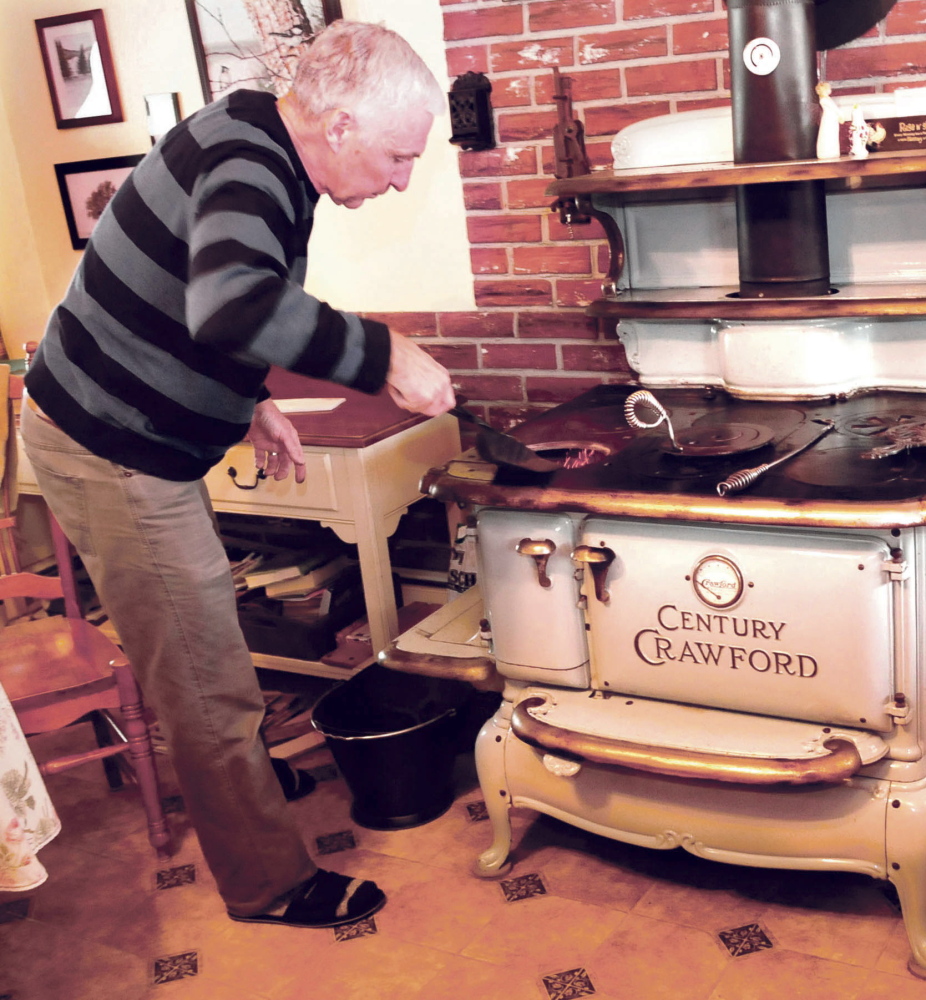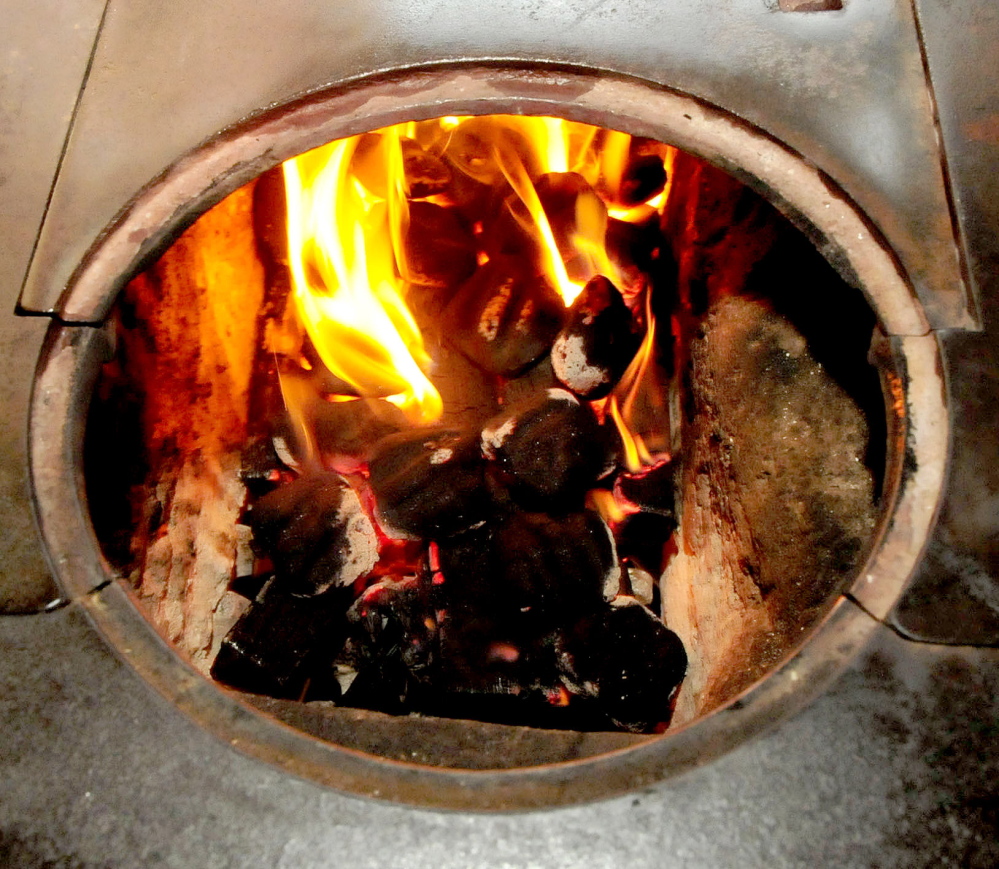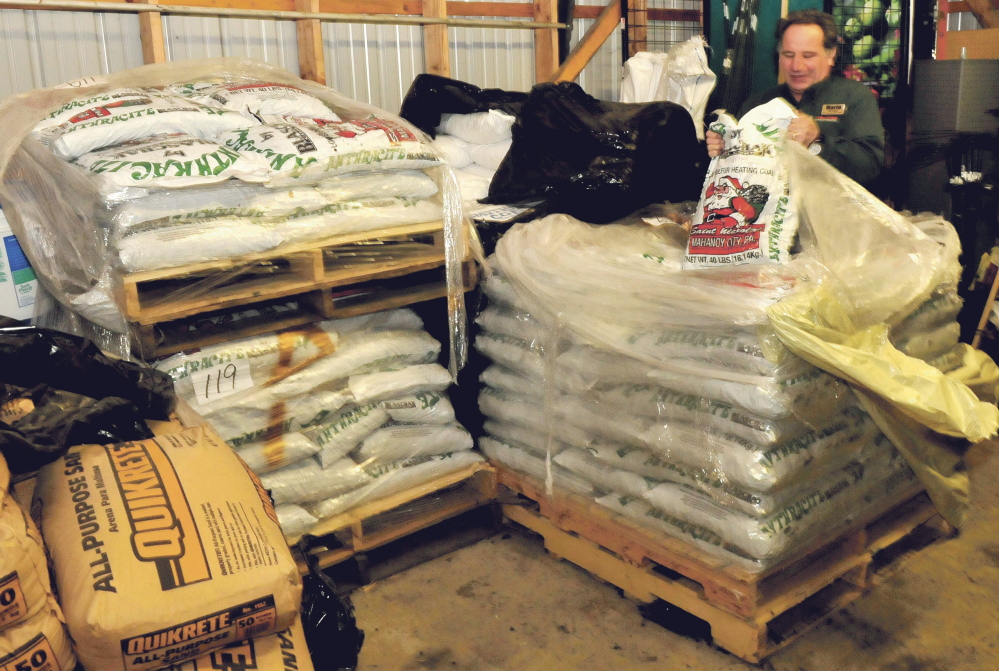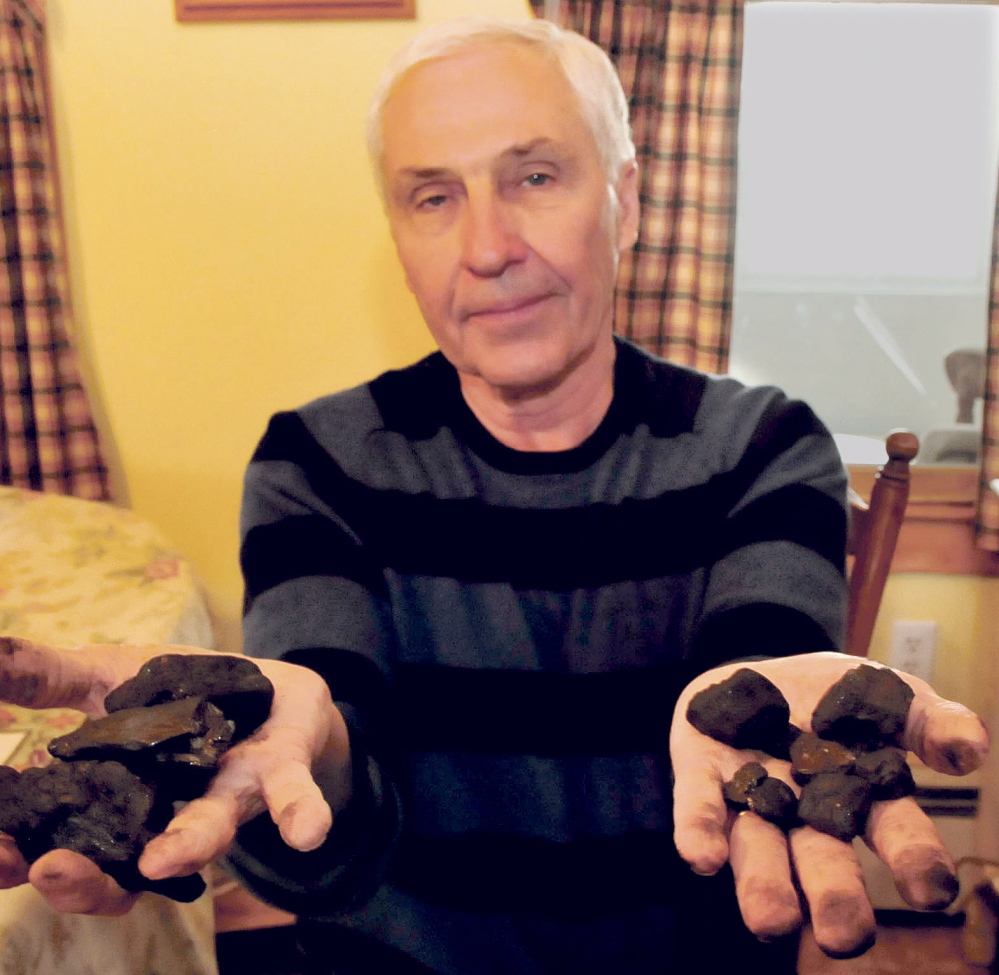Proponents say it’s easier to use than wood and it burns hot without leaving creosote deposits.
On a recent blustery and cold morning, John and Ruth Keister of Norridgewock cranked up their 100-year-old coal-burning kitchen stove, the way they have been doing since their kids were growing up in the 1980s.
Anthracite – or hard coal for residential use – was once a popular way to heat kitchens, garages and workshops before being eclipsed for home use by other fuels, in particular oil and wood.
But now it appears that coal is making a comeback with Mainers despite the advent of pellet stoves, wood heat and current low oil prices, says Kerry Thomas, owner of Central Maine Coal in North Turner, which sells about 200 tons of residential coal per heating season.
“Coal is not as popular as it was 75 to 100 years ago, but more people are burning it now because of the simplicity of it,” Thomas said. “One of the advantages that people really like is you never have to clean your chimney when you’re burning with coal. You don’t have creosote problems and you have to burn less coal for the energy amount. One ton of coal has more energy than one ton of wood pellets – you’re moving less product for the heat. The benefits are really good as compared to firewood, too.”
UP FROM 2006 LOW
Coal consumption for residential use hit a low of 258,000 tons in 2006 and then started to rise, according to a U.S. Energy Information Administration study cited by the New York Times in 2008. The story reported that coal consumption jumped 9 percent in 2007 and 10 percent during the early heating season in 2008, a time when heating oil and natural gas prices spiked.
Since late 2008, residential coal consumption data are no longer collected by the U.S. Energy Information Administration.
Devotees of coal heat say it’s more efficient and easier to use than wood.
“It’s a lot hotter than burning wood,” said 67-year-old John Keister, adding pieces of nut coal to the fire box. “And no clunkers, no smoke, no creosote and it lasts all night long. I could set this thing at 10 at night and I get up at 7 o’clock in the morning and it’s still going. It’s a lot hotter than wood and you don’t have to split it.”
EASIER THAN WOOD
Nut coal is small nuggets that burn efficiently.
Anthracite coal is a solid fossil fuel that is cleaner and harder than other forms of coal, according to Thomas, who said it offers the highest heat value of all coal. The other type of coal is bituminous coal, which is soft and burns with a smoky, yellow flame. It has a high sulfur content, and when burned, gives off sulfurous compounds that contribute to air pollution and acid rain.
Ruth Keister also uses the six-burner Century Crawford stove in Norridgewock to cook big family meals for occasions such as Thanksgiving and Christmas.
John Keister said he learned to use a coal stove from his grandfather, a descendant of Russian immigrants who settled in the coal regions of Pennsylvania in the 1800s and where his stash of nut coal is mined, washed and shipped.
“It’s easier to handle than wood – it lasts longer and I’m not feeding it all the time,” Keister said. “Once I get it going, I’m done. I don’t have to worry about the fire going out.”
A CONSISTENT HEAT
A 40-pound bag of coal – either rice coal, pea coal, nut coal or stove coal depending on the size – costs about $8.
The downside of burning coal at home is that there is a lot of ash compared to firewood or wood pellets, Keister said. Coal gas will also erode stainless steel chimney liners in just a few years, and it takes longer to get a coal fire going and burning hot than it does with wood.
Mario Bisol, manager of the Aubuchon Hardware store in Skowhegan, said he sells out of the rice, pea and nut coal by the time spring rolls along. He said the popularity of residential coal has remained steady over the past five years.
“We go through three to four tons of each – rice, pea and nut coal – per season,” he said. “If they wanted to heat just a kitchen or one or two rooms, they’d use probably 15 bags a week. They find it to be a more consistent heat.”
Bisol said he also sells wood pellets for about $6 per bag – some people go two bags per day in a pellet stove, which has an electric auger that feeds the pellets into the stove.
DOING THE MATH
“If you do the math at $6 per bag (for wood pellets) and the $8 (for coal) you’re almost right there in price – you’re almost the same, between $1,200 and $1,300 – but it’s a little bit cleaner burning pellets,” he said. “And with coal you don’t have to worry about the power going out – that’s one of the issues people are fearful of with pellet stoves.”
Bisol said a cord of seasoned firewood costs about $225. Burning five or six cords of wood per season would cost about $1,300, but the wood has to be cut, split, stacked and seasoned before it’s carried into the house. Bisol said he burns propane at his home for about $1,400 per season. Fuel oil, now that the prices have dropped, also is in the same price range over the course of a heating season.
The Keisters’ daughter, Katie, 27, said she remembers her father masterfully working the coal stove when she was a little girl growing up in Norridgewock.
A GATHERING SPOT
“A working coal stove in the kitchen meant that there was always a constant source of warmth and comfort throughout the cold winter months,” said Katie, who now lives in Portland. “I remember waking up in the morning and racing down the stairs to claim the ‘best seat’ near the cook stove.
“Ultimately, the best part of a coal stove or any stove in the kitchen is that it’s where everyone gathers in the winter. The kitchen is where we could all be found. The tea kettle was always full and steaming and our chairs circled the stove.”
Doug Harlow can be contacted at 612-2367 or at:
dharlow@centralmaine.com
Send questions/comments to the editors.







Success. Please wait for the page to reload. If the page does not reload within 5 seconds, please refresh the page.
Enter your email and password to access comments.
Hi, to comment on stories you must . This profile is in addition to your subscription and website login.
Already have a commenting profile? .
Invalid username/password.
Please check your email to confirm and complete your registration.
Only subscribers are eligible to post comments. Please subscribe or login first for digital access. Here’s why.
Use the form below to reset your password. When you've submitted your account email, we will send an email with a reset code.